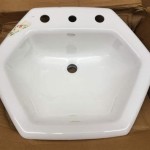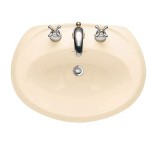How to Seal a Wooden Bathroom Vanity Top
A wooden bathroom vanity top adds a touch of warmth and elegance to any bathroom. However, wood is naturally porous and susceptible to water damage, making proper sealing essential for its longevity. Sealing the vanity top creates a protective barrier, preventing water absorption and staining, while safeguarding the wood's beauty. This article provides a comprehensive guide on how to seal a wooden bathroom vanity top effectively.
Choose the Right Sealant
The first step is to select the appropriate sealant for your vanity top. Several options are available, each with its unique characteristics and benefits.
- Polyurethane: This popular choice offers excellent durability, water resistance, and UV protection. It forms a tough, hard-wearing finish, suitable for high-traffic areas.
- Epoxy: Known for its exceptional strength and water resistance, epoxy is ideal for surfaces prone to moisture and spills. It creates a hard, non-porous seal, making it suitable for countertops and vanity tops.
- Varnish: Available in various finishes, from matte to gloss, varnish offers a protective layer that enhances the wood's natural beauty. However, it may not be as water-resistant as polyurethane or epoxy.
- Oil-based finishes: While not as water-resistant as other options, oil-based finishes penetrate the wood, providing a protective barrier and enhancing its grain. They are typically used for interior applications and may require more frequent reapplication.
Consider the specific requirements of your bathroom and the desired finish when selecting the sealant. Factors such as moisture levels, expected wear and tear, and personal preferences should influence your choice.
Prepare the Vanity Top
Proper preparation is crucial for a successful sealing process. Before applying the sealant, ensure the vanity top is clean and free of dust, debris, and any existing coatings. The following steps ensure optimal preparation:
- Clean the surface: Use a mild detergent and warm water to clean the vanity top thoroughly. Remove any soap residue or spills with a damp cloth.
- Sand the surface: Sanding the surface smoothens it and improves the sealant's adhesion. Use fine-grit sandpaper to remove any imperfections, scratches, or old coatings.
- Wipe down the surface: Once sanded, wipe down the vanity top thoroughly with a tack cloth to remove dust and debris.
- Apply a wood conditioner (optional): For dry wood, apply a wood conditioner to nourish and hydrate the surface before sealing.
These steps ensure that the sealant adheres properly and provides a durable, long-lasting protection for your wooden vanity top.
Apply the Sealant
With the vanity top prepared, it's time to apply the sealant. Follow these steps for a smooth and even application:
- Apply the sealant in thin coats: Use a brush, roller, or spray to apply the sealant evenly over the entire surface.
- Avoid pooling: Allow the sealant to penetrate the wood and avoid excessive pooling. Wipe off any excess sealant with a clean cloth.
- Allow drying time: Follow the manufacturer's instructions for drying time. Ensure the sealant is completely dry before applying additional coats.
- Apply multiple coats: For optimal protection, apply multiple coats of sealant, allowing each coat to dry before applying the next.
Proper application techniques ensure the sealant adheres effectively and creates a durable, long-lasting protective barrier.
How To Build Protect A Wood Vanity Top Houseful Of Handmade
How To Build Protect A Wood Vanity Top Houseful Of Handmade
How Do Wooden Countertops Really Hold Up Exquisitely Unremarkable
Finish For A Bathroom Vanity The Wood Whisperer
How To Build Protect A Wood Vanity Top Houseful Of Handmade
How To Build Protect A Wood Vanity Top Houseful Of Handmade
How To Build Protect A Wood Vanity Top Houseful Of Handmade
The Foolproof Guide To Diy Wood Countertops For A Bathroom
How To Finish A Wood Bathroom Countertop And Vanity South House Designs
How To Build Protect A Wood Vanity Top Houseful Of Handmade







